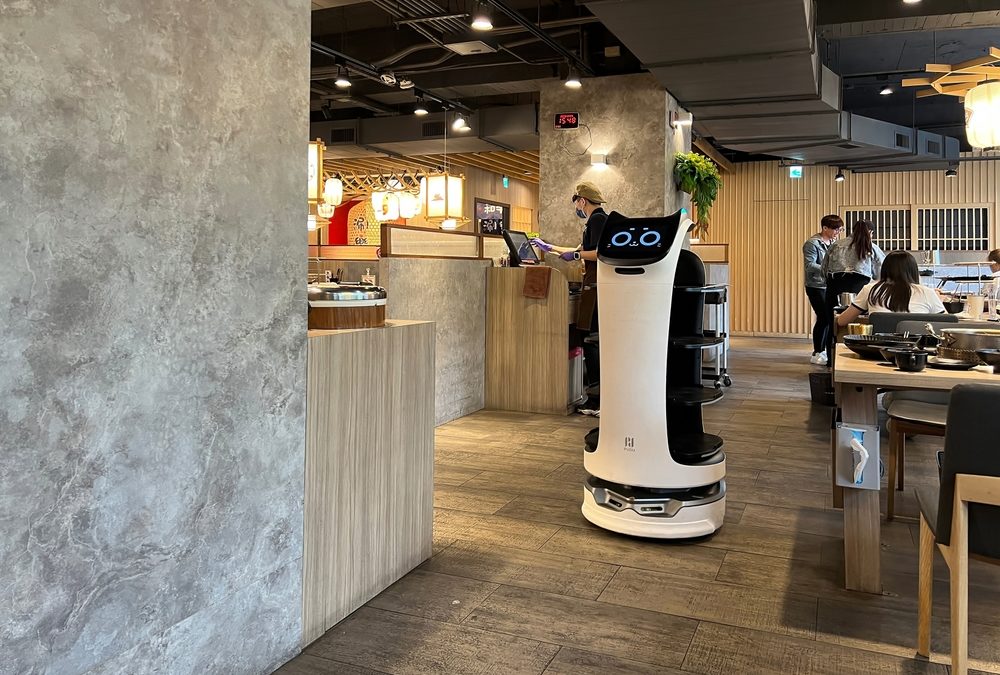Artificial Intelligence (AI) is having a transformative impact on how businesses operate. And its influence is being felt in many different ways. From customer service to marketing, data analytics to process automation, AI is helping companies achieve previously unimaginable goals across the board, with greater precision and efficiency.
In particular, AI is widely touted for its potential to unlock untapped productivity in the workforce. According to PwC, for example, industries most exposed to AI are likely to see three times greater revenue growth than those least exposed.
This depends on AI being deployed in such a way that it supports and augments what people do. In customer-facing industries like retail, hospitality and leisure, that very much centres on supporting the service side. There are already multiple forms of AI that fulfil such roles, from AI agents embedded in apps, websites, kiosks, POS etc, to physical service robots serving tables and delivering room service in hotels.
Whatever type of ‘bot’ you consider introducing to your business, be it the software or hardware variety, it’s important to keep that goal of adding to what you have, and in particular to what your people offer, as your key focus. AI is no different to any other type of technology in that regard. It doesn’t deliver results in a vacuum – it’s all about getting the right fit for your business, your processes and your people.
To that end, simply installing a fleet of smart kiosks or introducing service robots won’t deliver the results you hope for. You have to lay the groundwork first. Here are some tips on what that looks like.
Audit your current operations
The first step is to be very clear about how your business works before introducing AI bots – and then being clear about where and how they can make a positive difference. With regards to customer-facing bots, this should involve mapping the customer journey, and identifying pain points that could be alleviated with an AI solution. Are there bottlenecks at point of sale? Are customers struggling to get the information they want on demand?
This audit should also consider pain points for your staff, such as where they are being stretched too thinly across multiple tasks, or where low-value repetitive tasks are distracting them from the more meaningful interactions with customers. And finally, run the rule over your current technical infrastructure, too. Advanced AI systems are not necessarily plug-and-play solutions. They need adequate processing, network, data and security architecture in place in order to function safely and efficiently.
Invest in your people
To return to a point made above, technology is never a solution in its own right, no matter how clever. It is a tool. And tools need people who know how to use them. Or, as may be a better way of putting it in relation to automated AI systems and robots, people who know how to work alongside them.
It’s a common but critical error to approach adoption of AI and robotics without also considering the impact on people. As mentioned above, one of the great promises of AI is unlocking productivity and revenue potential in your existing workforce. You don’t do that without investing in people, too, and developing their skills to work effectively in a new kind of environment.
Embrace innovation as a process
Once upon a time, tech upgrades were treated as distinct, finite projects with clear goals, budgets and end dates. But given the sheer pace and scale of technological development, things have changed. There’s so much choice in technology these days, it’s almost impossible to know what product or solution will work best. And there’s a very real possibility that, no sooner have you completed one long-term transformation project, what you’ve implemented has already been superseded by the latest innovation.
For both of these reasons, the best way to approach AI and robotics adoption is in small, iterative steps. Not sure exactly how get the best out of agentic AI? Experiment. Try a small-scale trial, for example by running bots only on your website or kiosks, or limiting their function to only taking orders or answering service queries. Measure impact, try the technology somewhere else, compare results, then decide on your next steps.
